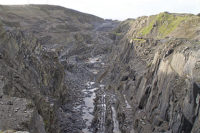
Tufitalia has been quarrying Tufa Stone in the area of Civita Castellana, just outside of Viterbo, Italy, since 1953.
Used for centuries to build dwellings and villages along the Apennines - a mountain range stretching a little more than 600 miles from the north to the south of Italy along its east coast - Tufa is a volcanic stone resembling the appearance of brick. While porous and a little softer than other basalts, the material has remained popular for building and landscape designs throughout the decades. Capitalizing on this niche market, Tufitalia has been quarrying Tufa Stone since 1953. The company not only is an experienced quarrier of the material, but also employs a skilled staff of stone artisans who create detailed ornamental work.
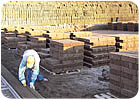
Through the years, the company has honed its quarrying skills of Tufa Stone, allowing it to detect the best seams in open-pit quarries. At the time of Stone World's visit, quarry workers were extracting blocks from a site that the company has owned for 12 years and has been in operation for 30 years.
Paludi went on to explain that Tufa Stone possesses several essential qualities, such as it being insulating and environmental-friendly, while not needing any form of treatment. “Today, building a Tufa house is easy and cheap - walls are not in contact with the ground, as it is for any building having foundations, so there is no danger of damage from humidity,†he stated. “If required, we also treat the Tufa with water-repellent substances which eliminate the 'wet' effect when it rains.â€
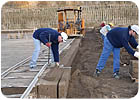
The quarrying process involves freeing individual pieces with special cutting machines, which work down to more than 165 feet deep from the surface.
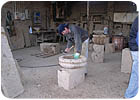
Skilled artisans produce handcrafted pieces of art that are ideal for outdoor applications such as gardens and public parks.
The coloring of Tufa Stone varies from a shade of red to chocolate brown. According to Tufitalia, the stone's porosity helps with the freeze/thaw cycle because there is room for expansion.
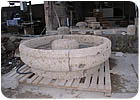
The company's craftsmen also create larger and more elaborate elements such as fountains.
Handcrafted products
Primarily, the company specializes in the production of curbing and pavers. Additionally, it does a significant amount of handwork. “Tufitalia has a team of very skilled craftsmen who chisel Tufa blocks into wonderful tables, fountains, vases or flower pots,†stated Paludi. “Each piece is one-of-the-kind, and some are so elaborate that they take several days of work. We also make exclusive customized pieces.â€To showcase its collection of handcrafted stone products, Tufitalia maintains an outdoor “showroom,†allowing its customers to view displays of various applications. Ideal for public parks and other outdoor settings, Tufa Stone can enhance an overall design and upgrade the landscaping.
In addition to Tufa Stone, Tufitalia is a supplier of other natural stone products, rocks, pebbles, granulates and hand-printed antiqued baked clay objects.
